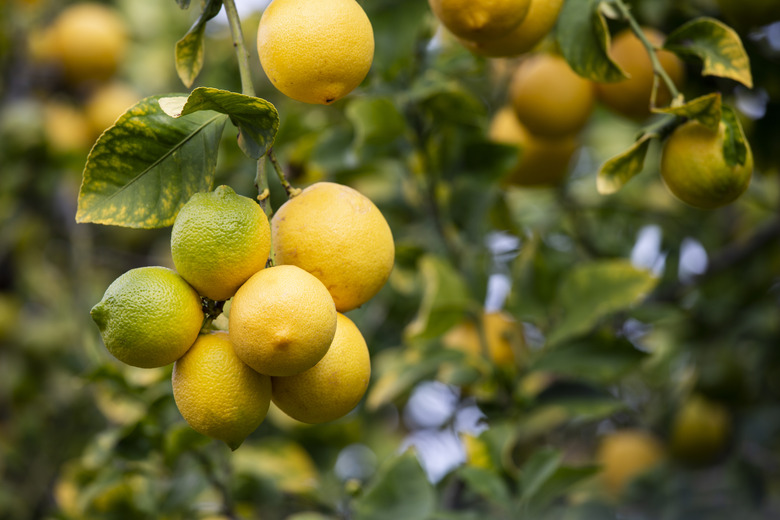Why You Should Plant Your Citrus Trees Far From Cement
We may receive a commission on purchases made from links.
Citrus trees (Citrus spp.) may be grown in tropical and subtropical gardens in U.S. Department of Agriculture plant hardiness zones 9 through 11. The trees range in size from dwarf up to standard, approximately 6 to 30 feet tall, but all have wide, strong root systems that help them gather moisture in hot climates. It is best to plant citrus and all trees away from houses and cement paths to prevent damage.
Citrus Tree Root Systems
Citrus Tree Root Systems
The roots of a citrus tree may or may not contain a taproot, which is a deep, thick, anchoring root that grows vertically. The majority of the root system is made of woody, fibrous horizontal roots with numerous hairy feeder roots; the roots can spread up to three times the height of the mature tree. Most tree roots are located in the top 6 to 24 inches of soil. The availability of food in the form of carbohydrates, water and soil temperatures influence the amount and type of root growth in a citrus tree.
All trees have the potential to become invasive with their root system, which will grow where their needs are met and spread to areas that hold those needs. This is why tree roots often invade water pipes when seeking moisture. Avoid planting citrus and other trees near septic drain fields as well; the nutrient-rich, moisture-laden soil will attract tree roots and may damage the system.
Cement and Lime
Cement and Lime
Cement makes concrete when it is mixed with water. Some people add lime to the mixture which makes more of a mortar consistency. Lime in soils decreases the acidity and raises the pH level.
Citrus trees thrive in soils with moderate acidity and exhibit deficiency symptoms when they are grown in alkaline areas. Lime can leach out from fresh cement into the soil. When your citrus tree is near a new cement structure, the roots will become stunted and growth slows. This is a response to an environment that they do not like.
Root to Shoot Ratios
Root to Shoot Ratios
The size of a citrus tree is linked to the size of its root system as well as genetics. Larger, more vigorous root systems can support more shoots. Conversely, more shoots grow in response to root system growth as supported through photosynthesis.
When the root system is damaged or diseased, leaves fall off the citrus tree. This is a response to a lack of water and nutrients that are being pulled up by the roots to support the leaves. In citrus trees, there are more shoots than roots, with an average ratio of 1 to 4 or 1 to 2 roots to shoots. This ratio will be even higher when the plant is compressed by thick cement and roots are prevented from growing.
Considerations for Planting
Considerations for Planting
The woody roots of trees may damage cement structures, but a more important consideration for the tree is a wide area for roots to grow. With this in mind, it is best to plant a citrus tree in a sunny location, at least 6 to 8 feet away from buildings or other structures. This will prevent root intrusion and allow the roots to have enough room to spread.
A citrus tree's root system is at least as wide as the canopy but can grow to a diameter that is twice the height of the mature tree. Soil type can affect the actual size of the root system. Sandy or loose loamy soils allow roots to pass easily so they will produce a wide root system. Clay soils are harder for roots to pass through and generally produce tight stunted root systems.
If space is tight, consider planting dwarf or semi-dwarf citrus trees in containers or raised beds. This will limit the root spread and help keep the trees small and manageable
